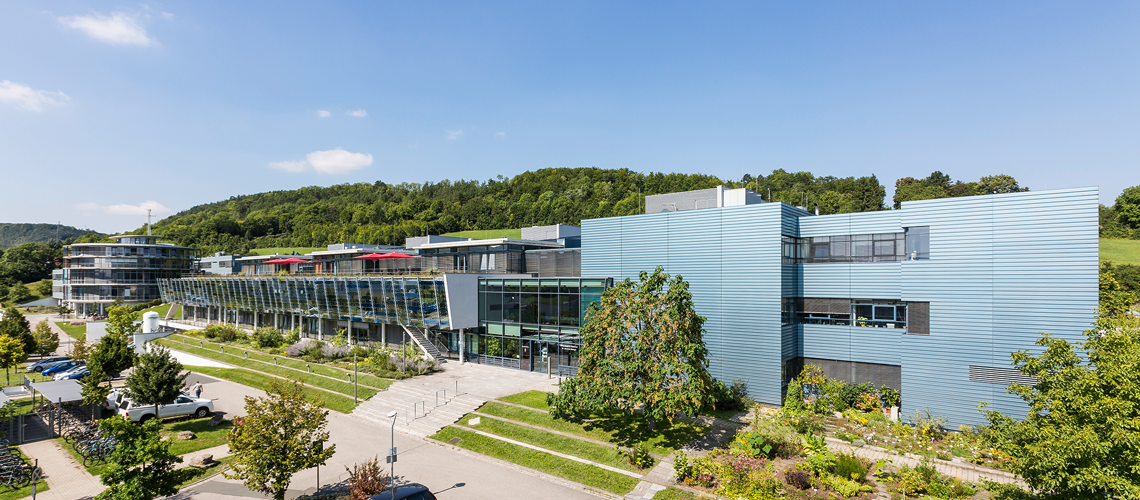
Job Offer from June 30, 2023
The Department of Interface Science, headed by Prof. Beatriz Roldán Cuenya at the Fritz Haber Institute carries out cutting-edge research on advanced functional materials with applications in heterogeneous catalysis, energy conversion and electrochemistry. By combining unique synthesis methods, state-of-the art tools for experimental characterization and advanced approaches to data analysis, atomistic details of thermal catalysis and electrochemical reactions at gas/solid and liquid/solid interfaces are revealed. In particular, structure-reactivity correlations on nanostructured materials can be established, paving the way for the rational design of novel catalytic materials.
We are currently looking for a PhD student for the Spectro-Microscopy group within the Department of Interface Science.
One PhD student position (m/f/d)
Project: Spectromicroscopy studies of complex processes in thermal catalysis
The group operates an ultra-high vacuum (UHV) based aberrations corrected and energy filtered Low Energy and Photoemission Electron Microscopy (LEEM/PEEM) at the UE49PGM-SMART high flux soft x-ray beamline at BESSY-II. This spectromicroscope is used to characterize catalytically active surfaces such as single crystal surfaces, oxide films and supported nanoparticles (NP) and to follow in real time and in situ processes such as epitaxial film growth, thermal reactions in a pressure range up to 10-5 mbar and phase transitions. Various special equipment are connected to the microscope allowing for quasi in situ processes like UHV based plasma treatment, chemical reactions in near ambient pressure (NAP) and electrochemistry. The instrument excels at (1) the comprehensive characterization by combing various microscopy, diffraction and spectroscopy tools at high lateral and energy resolution of up to 2.6 nm and 180 meV, respectively, (2) high and tunable surface sensitivity between 0.3 and 3 nm, (3) high chemical sensitivity (elemental composition, chemical state) and structural sensitivity (surface reconstruction of absorbed species, crystallinity, surface facet orientation) and (4) fast acquisition of the full field image (higher than video rate). Furthermore, the group operates a pure LEEM/PEEM microscope which is equipped with a high-pressure cell (HPC) to quasi in situ study chemical reactions on catalytically active surfaces with reactive gases in a pressure range up to 20 bar. The third instrument is an unique NAP-LEEM/XPEEM which is dedicated to observe in real time thermal reactions in the mbar range.
Besides the main project, the candidate is expected to work in a team on diverse projects from collaborations (within the ISC Department and Catlab projects), and also to support the experiments of the external users at the SMART beamline. Your challenge will be to improvise the methodologies of measurements and analysis towards various samples and reactions following an initial training at the spectromicroscope.
The PhD candidate is expected to graduate after three years.
Requirements
- A strong master degree in Chemistry, Physics or Physical Chemistry, preferably with a specialization in thermal catalysis or surface science.
- Knowledge of surface science techniques like e.g. XPS, NEXAFS, LEED, PEEM, LEEM, TDS.
- Experience at performing complex UHV experiments with a high drive to solve scientific and practical/instrumental challenges independently.
- Experience working at synchrotron light sources (preferred, but not required)
- Ability to work in a team.
- Collaborative spirit and excellent English language skills.
Application
Please submit your application via our online application portal as soon as possible but latest by July 31, 2023 including the following documents:
- Curriculum vitae
- List of publications
- Letter of motivation
- List of courses and GPA
- Names and email addresses of at least two references
Max Planck Society
The Max Planck Society endeavours to achieve gender equality and diversity. Furthermore the Max Planck Society aims to increase the participation of women in research; applications by women are particularly welcome. The Max Planck Society is also committed to increasing the number of individuals with disabilities in its workforce and therefore encourages applications from such qualified individuals.
Berlin
The Fritz Haber Institute (FHI) is located in the quiet south-west of Gemany’s capital Berlin, which is a large, tolerant and cosmopolitan city. Berlin offers a wide variety of culture, art, music, and outdoor opportunities.
The BESSY-II synchrotron light source of the HZB is one of the worldwide leading soft x-ray light source and is located in the south-east of Berlin. The Fritz Haber Institute is a cooperative research partner and operates a few beamlines and endstations at BESSY.
For more information, please contact:
Dr. Thomas Schmidt (schmidtt@fhi-berlin.mpg.de)
Fritz-Haber-Institut der Max-Planck-Gesellschaft
Faradayweg 4-6
14195 Berlin
Germany




